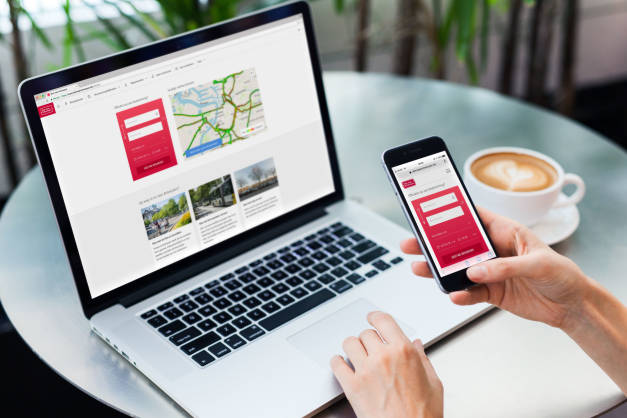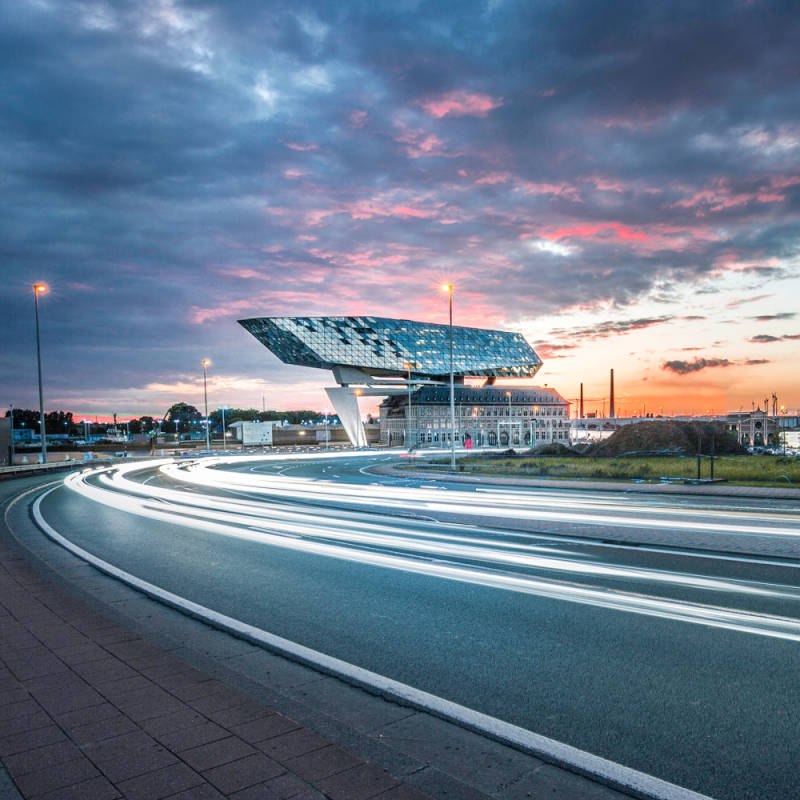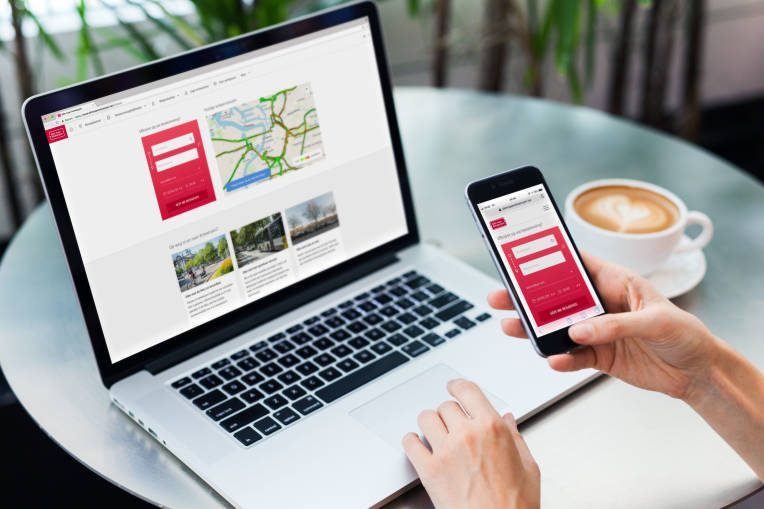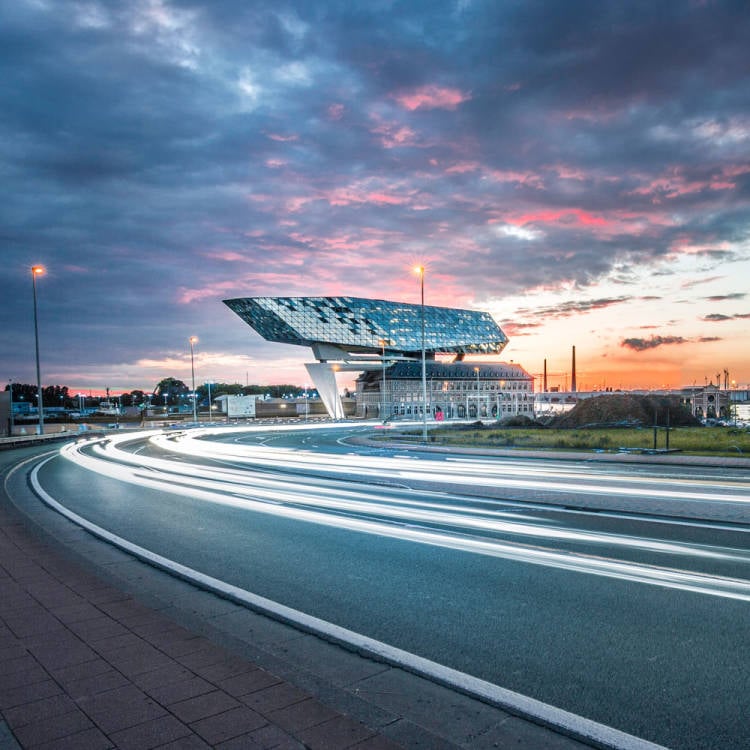
DEVELOPING
This measure consists of different aspects of dynamic traffic management and (smart) data management and use in the city and the port. As part of the CIVITAS project, Antwerp wants to install dynamic signage on the main roads in and around the city to guide traffic towards the desired entry points to the city.
Implementing dynamic signage includes upgrading the parking guidance system and the integration of P&R in the dynamic system as well as the use of data from intelligent cameras to guide traffic in the port area. Furthermore, the Antwerp Port Authority has planned a network of ANPR cameras at the edge of the port, both for security reasons and to provide statistics on the traffic flow in and out of the port.
Lastly, to further feed a knowledge-based policy approach, insights are needed in the trends and mobility patterns of transport users. The city has a lot of data at its disposal, but the systems are operating separately. A better integration of the different sources is required. Therefore a digital platform back office for traffic data will be implemented.
FACTSHEET 07
DYNAMIC TRAFFIC MANAGEMENT
Results, findings & lessons learned
More info
|
|
Context & challenges
CONTEXT & CHALLENGES
• Challenge 1: Junctions are used by several travel modes. Every user therefore wants ‘top priority’ in the new configuration. In reality, this is of course not possible, the policy vision determines who gets which priority.
• Challenge 2: For the traffic light configuration, the team depends a lot on external factors. Each element in the chain of adaptation can be “the weakest link”: Elements such as maintenance works or infrastructure works from several partners can cause delays.
• Challenge 3: As not all data is yet available, it is still quite difficult to determine how the back office precisely should be managed.
• Challenge 4: Historic data collection can be challenging: data can be sensitive.
An overview of data available, and the future adaptations
Development of the NXTMobility platform
Description
Innovative aspect
A new innovative management system for the traffic lights in Antwerp
This system will focus on the policy objectives for pedestrians, cyclists, public transport and car traffic
A new traffic management strategy for the Antwerp region
A traffic management strategy for new, optimized and dynamic lighting schemes is being designed and implemented
& LESSONS LEARNED

No.
1
The investment of the team in the development of a back office for traffic data, has paid off.
Guiding commuters and visitors through the process of changing their mobility choices and travel behaviour
2
Rating
Comment
Objective and target
A modal shift towards more sustainable modes of transport
The target of 10000 people avoiding peak hours to the city by car, was met and even overachieved: 14000 cars less have entered the city during peak hours
NA
A network of ANPR cameras is in place in the port area. Unfortunately no data is available yet due to legislative concerns.
Optimising security and mobility in the port area by installing intelligent cameras at the main gateways
3
NA = Not Assessed O = Not Achieved = Substantially achieved (at least 50%) = Achieved in full = Exceeded
The investment of the team in the development of a back office for traffic data, has paid off.
Motivating inhabitants and visitors of the historic city centre to switch to more sustainable means of transport by providing them with useful (real-time) data and tools to inform them on alternatives
4
• Recommendation 1: A dedicated project manager for each sub measure is necessary. Each project manager mentioned (unforeseen) bottle necks or ‘growing pains’ along the way. A good planning and well thought out timing is necessary.
• Recommendation 2: A check of possible technology, legislative and privacy related issues is necessary.
• Recommendation 3: The need for a digitalization of mobility flows is becoming increasingly important.
• Recommendation 4: Sufficient consultation between several stakeholders is necessary in order to convince everyone of the benefits of the measure.

www.slimnaarantwerpen.be
www.antwerpen.be
More info about CIVITAS PORTIS
can be found on the website civitas.eu/portis

DEVELOPING
This measure consists of different aspects of dynamic traffic management and (smart) data management and use in the city and the port. As part of the CIVITAS project, Antwerp wants to install dynamic signage on the main roads in and around the city to guide traffic towards the desired entry points to the city.
Implementing dynamic signage includes upgrading the parking guidance system and the integration of P&R in the dynamic system as well as the use of data from intelligent cameras to guide traffic in the port area. Furthermore, the Antwerp Port Authority has planned a network of ANPR cameras at the edge of the port, both for security reasons and to provide statistics on the traffic flow in and out of the port.
Lastly, to further feed a knowledge-based policy approach, insights are needed in the trends and mobility patterns of transport users. The city has a lot of data at its disposal, but the systems are operating separately. A better integration of the different sources is required. Therefore a digital platform back office for traffic data will be implemented.
FACTSHEET 07
DYNAMIC TRAFFIC MANAGEMENT
Results, findings & lessons learned
More info
Context & challenges
CONTEXT & CHALLENGES
• Challenge 1: Junctions are used by several travel modes. Every user therefore wants ‘top priority’ in the new configuration. In reality, this is of course not possible, the policy vision determines who gets which priority.
• Challenge 2: For the traffic light configuration, the team depends a lot on external factors. Each element in the chain of adaptation can be “the weakest link”: Elements such as maintenance works or infrastructure works from several partners can cause delays.
• Challenge 3: As not all data is yet available, it is still quite difficult to determine how the back office precisely should be managed.
• Challenge 4: Historic data collection can be challenging: data can be sensitive.
Innovative aspect
Description
A new innovative management system for the traffic lights in Antwerp
A traffic management strategy for new, optimized and dynamic lighting schemes is being designed and implemented
Innovative aspect
Description
A new traffic management strategy for the Antwerp region
This system will focus on the policy objectives for pedestrians, cyclists, public transport and car traffic
Innovative aspect
Description
Development of the NXTMobility platform
An overview of data available, and the future adaptations
NA = Not Assessed O = Not Achieved = Substantially achieved (at least 50%) = Achieved in full = Exceeded
& LESSONS LEARNED

No.1 Objective and target
Rating
Comment
A modal shift towards more sustainable modes of transport
The target of 10000 people avoiding peak hours to the city by car, was met and even overachieved: 14000 cars less have entered the city during peak hours
No.2 Objective and target
Rating
Comment
The investment of the team in the development of a back office for traffic data, has paid off.
Guiding commuters and visitors through the process of changing their mobility choices and travel behaviour
No.3 Objective and target
Rating
Comment
A network of ANPR cameras is in place in the port area. Unfortunately no data is available yet due to legislative concerns.
Optimising security and mobility in the port area by installing intelligent cameras at the main gateways
NA
No.4 Objective and target
Rating
Comment
The investment of the team in the development of a back office for traffic data, has paid off.
Motivating inhabitants and visitors of the historic city centre to switch to more sustainable means of transport by providing them with useful (real-time) data and tools to inform them on alternatives
• Recommendation 1: A dedicated project manager for each sub measure is necessary. Each project manager mentioned (unforeseen) bottle necks or ‘growing pains’ along the way. A good planning and well thought out timing is necessary.
• Recommendation 2: A check of possible technology, legislative and privacy related issues is necessary.
• Recommendation 3: The need for a digitalization of mobility flows is becoming increasingly important.
• Recommendation 4: Sufficient consultation between several stakeholders is necessary in order to convince everyone of the benefits of the measure.

www.slimnaarantwerpen.be
www.antwerpen.be
More info about CIVITAS PORTIS
can be found on the website civitas.eu/portis